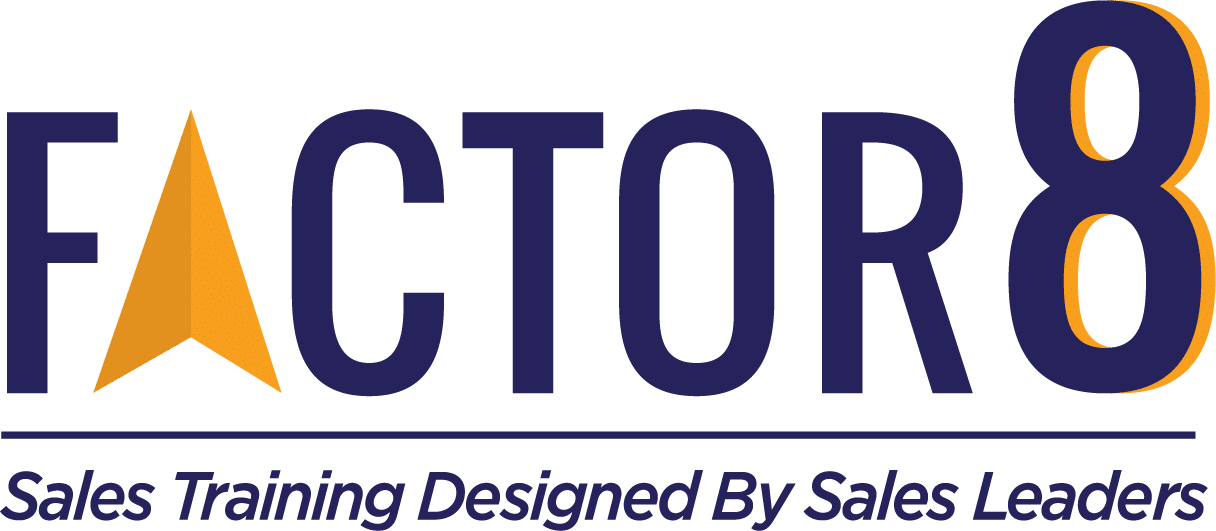How Do Logistics Companies Adapt Sales Strategies Amid Global Challenges?
Logistics companies must strategically evolve their sales approaches when facing unprecedented challenges. As the world experiences geopolitical shifts, economic uncertainties, and digital transformation, logistics companies must adeptly deal with these complexities to sustain and grow their businesses. This demands understanding emerging market trends, integrating cutting-edge technologies into logistics strategies, and proactively responding to changing consumer behaviors.
In this context, let’s discuss a few examples of how logistics companies adapt sales strategies amid global challenges and recalibrate their methods to effectively meet the demands of the modern market.
READ: 6 Logistics Sales Tips to Master Phone Selling
Key Takeaways
- Logistics companies face unprecedented geopolitical shifts, economic uncertainties, and digital transformations. To thrive, they must understand emerging market trends, integrate cutting-edge technologies, and respond proactively to changing consumer behaviors.
- Volatile markets demand adaptive strategies and resilient decision-making. Logistics companies must navigate economic uncertainties by staying agile, making strategic decisions, and optimizing operations to thrive in unpredictable landscapes.
- Economic uncertainties directly impact consumer spending, influencing logistics demand. Companies must remain flexible, efficiently manage supply chains, and be prepared to handle fluctuations in workload, ensuring resilience in uncertain economic times.
Understanding Global Challenges
Dealing with complicated global challenges requires a comprehensive understanding of the complex factors shaping our world. From geopolitical tensions and economic fluctuations to environmental concerns, let’s look into the various global challenges, offering insights into their origins, impacts, and potential avenues for effective resolution.
Economic Uncertainties
Businesses struggle with volatile markets and changing paradigms amid economic uncertainties. Navigating these challenges demands adaptive strategies and resilient decision-making to thrive in an unpredictable landscape.
Impact On Consumer Spending And Demand For The Logistics Industry
Economic uncertainties affect people’s spending, impacting the whole inbound logistics industry. When people are unsure about the economy, they spend less. This makes logistics companies rethink their plans to save money and work better. The demand for moving goods around also goes up and down.
So, these companies must be flexible and smart in managing their supply chains. They have to find ways to be efficient while being ready to handle more or less work quickly. This helps them stay strong and responsive, even in an uncertain economy.
Currency Fluctuations And Their Effects On Pricing
Currency fluctuations play a pivotal role in shaping pricing dynamics. When a country’s currency value shifts, it impacts the cost of imported goods and production inputs. For businesses dealing with international trade, these changes can lead to unpredictable costs, affecting pricing strategies. A weaker currency can make exports more competitive but might squeeze profit margins.
Adaptable pricing mechanisms become crucial for businesses to absorb currency-related shocks, ensuring competitiveness and financial stability in the face of ever-changing exchange rates. Balancing these factors is vital for sustained market presence.
WATCH: 10 Virtual Sales Tips Guaranteed To Add Faster Revenue [FreightWaves]
Supply Chain Disruptions
Supply chain disruptions, unforeseen and impactful, pose significant challenges to businesses worldwide. Whether triggered by natural disasters, global events, or logistical hurdles, these disruptions can ripple through industries, affecting production, inventory, supply chain visibility, and customer satisfaction.
Impacts Of Geopolitical Tensions On Supply Chain Management
Geopolitical tensions, like conflicts between countries, can affect how things are moved and made globally. Tariffs and trade issues can make getting the stuff needed for business harder, leading to more costs, delays, and shortages.
To handle this, companies should use different suppliers, be flexible in moving things, and monitor political situations. Planning for these risks is crucial to keeping supply chain actions running smoothly. Understanding what’s happening between countries helps businesses be ready and resilient in the face of these challenges in their supply chains.
Natural Disasters And Their Influence On Logistics Operations
Unfortunately, natural disasters, such as earthquakes or floods, disrupt supply chains. They hinder the transportation of trucks and deteriorate roadways, making it difficult to deliver goods on schedule. Companies must quickly find new ways to send stuff, deal with insufficient products, and keep their workers safe.
After the disaster, they might need to help deliver things to needy people. Being ready for these problems by checking risks, using different suppliers, and having backup plans. With more and more bad weather happening, companies always need to stay ahead and be ready to adjust their plans to keep things working okay.
Technological Advancements
In the era of rapid innovation, technological advancements are transforming how we live and work. From the breakthroughs in artificial intelligence to the seamless integration of smart devices, let’s explore the dynamic landscape of technological progress and its profound impact on shaping our present and future.
Digital Technologies In The Logistics Industry
Digital technologies are changing how the logistics system works. Things like computers, data analysis, and smart devices make moving goods faster and cheaper. Tools track shipments, improving routes and reducing delays. Using the Internet to share information helps everyone work together.
Smart machines predict what will happen, making it easier to plan. Connecting online shopping with shipping makes delivering orders faster. These tech changes improve the logistics process, help the industry stay flexible, and grow in our modern and tech-driven world.
The Rise of E-Commerce And Its Implication For Logistics Sales
The rise in e-commerce is changing how things are bought and sold, significantly affecting logistics sales. The increasing popularity of online shopping has led to a greater need for dependable and effective logistics services. Logistics companies must adapt by integrating advanced technologies and logistics functions, optimizing last-mile delivery, and bolstering warehouse capabilities.
The growth of online businesses demands a customer-centric logistics strategy that prioritizes openness and adaptability. Meeting the changing demands of online platforms, maintaining a smooth supply chain, and taking advantage of the growing opportunities given by the digital marketplace are now critical components of successful logistics sales.
DOWNLOAD: Top Virtual Sales Challenges [INFOGRAPHIC]
Adapting A Sales Strategy
In a dynamic landscape, businesses must flexibly respond to shifting consumer behaviors, emerging technologies, industry events, and market trends, ensuring resilience and sustained success in a rapidly changing environment.
Embracing Digital Transformation
In the era of rapid technological evolution, embracing digital transformation is key to staying relevant and competitive.
Leveraging Technology For Efficient Sales Process
Using technology effectively is essential for a successful sales process. Customer relationship management (CRM) systems streamline communication, track interactions, and optimize lead management.
Automation tools facilitate personalized communication and nurture leads at scale. Advanced analytics provide insights into customer preferences, aiding targeted selling strategies. E-commerce integration enables seamless transactions, while AI-driven chatbots enhance customer support. Mobile platforms empower sales teams to operate flexibly.
By leveraging these technologies, companies increase productivity, decrease expenses, and develop a customer-centric approach and responsive sales ecosystem, giving them a competitive advantage in today’s tech-driven market.
Implementing E-Commerce Platforms and Online Sales Channels
Integrating e-commerce websites, online platforms, and online sales channels is transformative for businesses. Establishing a robust online presence facilitates global reach and 24/7 accessibility. E-commerce platforms streamline transactions, ensuring a seamless and secure customer shopping experience.
Utilizing online sales channels, such as social media and marketplaces, expands visibility and diversifies revenue streams. Responsive websites and mobile optimization enhance end-user experience. Leveraging predictive analytics also provides valuable insights into customer behavior, aiding targeted marketing.
Businesses can increase market reach and adjust to changing consumer preferences by utilizing various digital distribution channels, which promotes growth and competitiveness in the ever-changing world of online commerce.
Diversification Of Services
Embracing diversification in services is a strategic move for businesses navigating today’s dynamic markets. Know the importance of expanding offerings to meet diverse consumer needs, fostering adaptability, mitigating risks, and ensuring sustained growth in an ever-evolving business landscape.
Expanding Service Levels To Meet Changing Market Demands
Businesses need to adapt their services as market demands change to stay competitive in the industry. It means offering what customers order, whether personalized experiences or quick customer support. By being flexible and paying attention to people’s needs, companies can keep customers happy and grab new opportunities in the evolving market.
Specialized Solutions For Niche Markets and Industries
Creating specialized solutions for niche markets means customizing products or services to meet specific needs in particular industries or customer groups. This approach helps businesses stand out by addressing unique challenges and opportunities.
It allows companies to build expertise and establish a competitive edge in markets with specific demands. Providing tailored solutions is an effective way for businesses to differentiate themselves and succeed in industries where one-size-fits-all offerings may not suffice, fostering long-term success and customer satisfaction within these specialized markets.
Agility and Flexibility
Agility and flexibility are essential for success in the dynamic business world. Understanding how businesses navigate change, seize opportunities, and respond promptly to evolving demands positions themselves for resilience and sustained growth in dynamic environments.
Creating Flexible Sales Structures To Respond To Dynamic Market Conditions
Creating flexible sales structures involves strategic design to respond swiftly to dynamic market conditions. Start by understanding evolving consumer needs and monitoring market trends. Develop an adaptable framework that allows quick adjustments to pricing offerings and sales strategies. Embrace technology for real-time data analysis to inform decision-making. Foster a culture of agility within the sales team, encouraging proactive responses to changing market dynamics.
Regularly assess and refine the sales structure based on performance metrics and customer feedback. This approach ensures that businesses remain responsive, capitalize on emerging opportunities, and effectively navigate the complexities of a dynamic market environment.
Building Adaptive Pricing Models
Building adaptive pricing models requires a strategic approach. Analyze market dynamics, considering demand, competition, and economic trends. Implement data-driven insights to identify optimal pricing points and incorporate flexibility to adjust in real time.
Embrace dynamic pricing algorithms that respond to changes, ensuring competitiveness. Tailor pricing structures to diverse customer segments, balancing value proposition and affordability. Regularly assess and refine models based on performance and market shifts.
Incorporate customer feedback to enhance pricing strategies. Businesses can cope with changing market environments, maximize income, and remain flexible in reacting to changing customer behavior and market situations by continuously adapting corporate strategy.
Customer Relationship Management (CRM)
Customer Relationship Management (CRM) is a pivotal strategy in modern business. From tracking interactions to enhancing personalized experiences, CRM is vital in fostering customer loyalty and driving sustainable business growth.
Utilizing CRM Systems To Enhance Customer Interactions
Leveraging CRM systems is critical to enhancing customer interactions. Begin by centralizing customer data to gain a comprehensive view. Use this information to personalize interactions, addressing individual needs and preferences. Implement automation for timely follow-ups, ensuring consistent engagement. Analyze customer behavior data to anticipate needs and tailor offerings.
Share customer insights within the CRM platform to encourage collaboration across teams. Update and maintain data accuracy regularly for effective decision-making. By utilizing CRM systems adeptly, businesses can build stronger relationships, improve communication, and create a customer-centric approach that fosters loyalty and satisfaction in today’s competitive market landscape.
Personalizing Sales Approaches Based On Customer Needs
Personalizing sales approaches involves understanding and responding to individual customer needs. Start by collecting and analyzing customer data to gain insights into preferences and behaviors. Tailor communication and product recommendations accordingly.
Utilize CRM systems for a centralized view of customer interactions, ensuring a seamless channel for customer experience throughout. Implement targeted marketing strategies that address specific needs and concerns. Foster open communication, encouraging feedback for continuous improvement. Regularly assess and adjust sales techniques based on customer responses.
Collaborative Approaches
Collaborative approaches stand as a cornerstone in today’s interconnected business landscape. From cross-functional teamwork to strategic partnerships, this approach cultivates innovation, accelerates problem-solving, and ensures collective success in navigating the complexities of modern industries.
Collaborating With Other Logistics Companies For Network Expansion
Collaborating with other logistics companies for network expansion requires strategic partnerships and shared goals. Begin by identifying compatible partners with complementary strengths. Establish transparent communication channels and define mutual objectives.
Implement technology solutions for seamless information exchange and coordination. Develop standardized processes to enhance interoperability. Foster a culture of collaboration among teams through joint training and knowledge sharing.
Review the partnership’s performance and adapt strategies as needed. By working together, logistics companies can create a robust network, optimize resources, enhance service capabilities, and capitalize on collective strengths to navigate the challenges and opportunities of the ever-evolving logistics industry.
Strategic Partnerships With Technology Providers For Innovation
Forming strategic partnerships with technology providers for innovation involves careful planning. Identify providers whose solutions align with your business goals. Establish clear communication channels and shared objectives. Collaborate on research and development to create innovative solutions.
Leverage their technological expertise to enhance your products or services. Foster a symbiotic relationship that benefits both parties. Regularly evaluate and adapt the partnership to evolving needs. Embrace a culture of continuous learning and collaboration. Through these strategic alliances and strong relationships, businesses can stay at the forefront of innovation, drive competitiveness, and capitalize on emerging technologies to meet the dynamic demands of the market.
Incorporating Sustainability In Sales Strategies
Integrating sustainability into sales strategies requires a holistic approach. Begin by aligning products or services with eco-friendly practices. Communicate transparently about sustainable initiatives to build customer trust. Implement green supply chain practices and choose eco-friendly packaging. Educate sales teams to articulate the environmental benefits of offerings.
Establish partnerships with sustainable suppliers. Integrate sustainable practices into marketing materials and campaigns. Leverage certifications to validate sustainability claims. Regularly assess and improve sustainability efforts. By incorporating eco-conscious elements into sales strategies, businesses appeal to environmentally-conscious consumers and contribute to a more sustainable and responsible marketplace.
Addressing Environmental Concerns To Attract Socially Responsible Clients
Addressing environmental concerns to attract socially responsible clients involves strategic initiatives. Start by transparently communicating eco-friendly practices in products and operations. Obtain and showcase relevant certifications.
Integrate sustainable practices into marketing materials. Support environmental causes and share these efforts with the community. Collaborate with eco-friendly partners and suppliers. Implement green packaging and supply chain solutions.
Educate clients on the positive environmental impact of their choices. Continually assess and improve sustainability efforts. By actively addressing environmental concerns, businesses can attract socially responsible clients and contribute to a more sustainable and conscientious business ecosystem.
WATCH: Sales Enablement Secrets: Actionable Sales Training Tips, Trends, And Advice
Talent Development and Sales Training
Talent development and sales training are critical pillars of organizational growth. From honing individual capabilities to fostering a culture of continuous learning, talent development, and training are key elements in achieving sustained success in dynamic industries.
READ: Why Event-Based Sales Training Falls Short
Training Sales Professionals On New Technologies And Trends
Training sales professionals on new technologies and trends involves a strategic approach. Begin by assessing skill gaps and identifying relevant technologies. Implement interactive and hands-on training sessions. Provide access to online resources and simulations.
Foster a culture of continuous learning through workshops and seminars. Encourage collaboration and knowledge-sharing among sales teams. Stay updated on emerging trends to adapt training content. Leverage e-learning platforms for flexibility.
Offer incentives and recognition for skill development. Regularly evaluate training effectiveness and refine programs as needed. By keeping sales teams abreast of technological advancements, businesses ensure adaptability and competitiveness in a rapidly evolving market.
READ: How to Measure Sales Training ROI
Developing A Customer-Centric Mindset Within The Sales Force
Developing a customer-centric mindset within the sales force requires a cultural shift. Start by emphasizing the importance of customer satisfaction in training programs. Encourage active listening and empathy during customer interactions.
Foster a collaborative approach, aligning sales goals with customer needs. Provide tools and resources that prioritize customer insights. Recognize and reward customer-centric behavior. Implement feedback loops to improve customer engagement continuously.
Integrate customer feedback into sales strategies. Cultivate a company-wide commitment to customer satisfaction. Using customer expectations and a customer-centric mindset, sales teams can build stronger relationships, enhance loyalty, and contribute to sustained business success in today’s customer-focused market.
Understanding And Adapting To Diverse Global Markets
Understanding and adapting to diverse global markets is crucial for business success. Conduct comprehensive market research to grasp cultural nuances, preferences, and economic trends.
Tailor marketing strategies to resonate with local audiences, considering language, customs, and values. Establish partnerships with local experts to navigate regulatory landscapes. Utilize technology for effective communication and market outreach.
Be agile in adapting products or services to meet specific market needs. Embrace diversity within the organization to foster cultural intelligence. Continuously monitor and respond to evolving market dynamics. Businesses can build resilience and thrive in a globally interconnected world by navigating the intricacies of diverse global markets.
Incorporating Cultural Intelligence In Sales Approaches
Incorporating cultural intelligence in sales approaches is pivotal. Start by fostering cultural awareness through training programs. Encourage active listening to understand diverse customer perspectives. Adapt communication styles and content to resonate with different cultures.
Employ sales teams that represent diverse backgrounds for a nuanced approach—leverage technology for language translation and cross-cultural communication. Respect cultural norms and etiquette in business interactions.
Collaborate with local experts for market insights. Continuously educate sales professionals on global trends and cultural shifts. By embracing cultural intelligence, businesses can build trust, establish meaningful connections, and tailor sales strategies that resonate authentically with diverse audiences in a globalized market.
Final Thoughts
In conclusion, logistics companies must adapt sales strategies amid global challenges for sustained success. Navigating geopolitical shifts, economic uncertainties, and digital transformation demands a proactive and flexible approach.
Logistics firms can thrive in the face of complexity by embracing innovative sales methodologies, integrating cutting-edge technologies, and staying attuned to emerging market trends. Their ability to recalibrate strategies, foster agility in supply chain management, and address changing consumer behaviors positions them for resilience.
In this dynamic landscape, the evolution of sales email marketing strategies becomes a necessity and a strategic imperative for supply chain process logistics companies to thrive amidst global challenges.
About the Author:

Diana leads the growth marketing initiatives at Stallion Express. As a personal trainer turned digital marketer, Diana is obsessed with equipping eCommerce entrepreneurs with everything they need to scale their online businesses. You can catch her doing yoga or hitting the tennis courts in her spare time.

